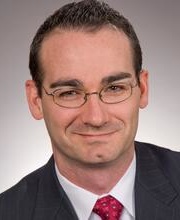Randy D Trumbower

Voluntary limb movements are fundamental to human life, as evidenced by the severe functional limitations that beset those with life-long paralysis after spinal cord injury (SCI). Humans routinely coordinate a broad range of limb movements to accomplish daily living activities such as eating, bathing, or walking. However, these well-choreographed movements are often constrained after SCI due to slow, variable and frustratingly limited functional recovery. Prior research has convincingly showed us that the human spinal cord does far more than serve as conduit for sensory and motor signaling. However, there remain important gaps in our understanding of how spinal circuits adapt and reorganize to allow humans to interact with the physical world or to compensate after injury.
My lab studies the neural regulation of whole limb movement and the underlying cellular mechanisms within spinal circuitry that may contribute to recovery of limb function after SCI. Our recent studies provide new appreciation for the capacity of the human spinal cord to adapt and reorganize after injury. In particular, we demonstrated that a novel spinal plasticity-promoting primer elicits respiratory and non-respiratory motor recovery in rodent SCI models (Lovett-Barr et al., 2012) and improved limb function in humans with SCI (Trumbower et al., 2012). An important goal guiding our translational research is to identify whether endogenous mechanisms of spinal plasticity demonstrated in rodents also contribute to functional recovery in humans with SCI. To achieve this goal, our team uses advanced electrophysiology, pharmacology, neuromechanics, and computer simulation techniques in able-bodied humans and persons with SCI.
Currently, we are tackling several important clinical questions: How do preserved spinal pathways communicate with functionally relevant motor targets after SCI? How do plasticity-promoting primers augment functional benefits of task-specific training after neurologic injury? We expect that answering these questions will establish important principles for exploiting endogenous mechanisms of plasticity for treating neurologic pathologies. Understanding and learning how to harness this plasticity will profoundly impact persons with life-altering paralysis.
Contact Information
1575 Cambridge Street
Cambridge, MA 02138
